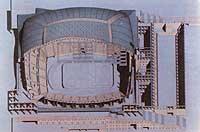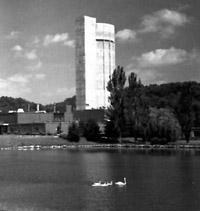Illumbe Bullring Mobile Space Structure
1999/08/01 Kortabarria Olabarria, Beñardo - Elhuyar Zientzia Iturria: Elhuyar aldizkaria
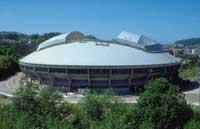
The roof of the bullring of Illumbe has been made by the company Lan de San Sebastian, specialized in spatial structures. When talking about spatial structures, there is talk of structures based on tube bars that are attached to spheres by screws. Before moving to the work the structures are completely finished, including painting, as they are made with very simple elements. The work comes in a package, bars, spheres and screws; in the work only the splicing, assembly is done. In a way, it would be like making the meccan, but in many larger dimensions. The most remarkable feature of these spatial structures is that at the base are very simple elements – bars and balls – but when joined together, extremely complex structures of large dimensions and complex shapes can be formed. These characteristics make spatial structures generally used in large buildings: sports cars, hangars, etc.
Ortz system
The spatial structures are based on the system called Ortz, patented by engineers Juan Martínez Apeztegia, Construction Engineer of the Bullring of San Sebastian, and Ignacio Odriozola. The structural system Ortz allows to realize the union of the bar and the ball in a very special way, obtaining structures that, otherwise, could hardly be standing.
The ball has threaded holes, made according to the direction of the bar to be inserted in it. At the ends of the tubular bars are welded the conical casings of the axial hole, that is, the covers that have been designed specifically for it later. They offer the possibility to tie the screws in two directions, so that when it is activated in the same, on the one hand the ball will be tied with the screw and on the other the screw will be tied with the bar. This system allows that during the assembly or disassembly of the tubular bar it is not necessary to modify the position of the ball, even if it is definitely installed in the structure. In this way, the construction process of the structure can be carried out very quickly and it is not difficult to change the affected bar.
Informatics at the service of spatial structures
Design is the first step of buildings with spatial structures. In this first step, through the CAD system itself, various geometric possibilities of Lanik are developed to define the proper typology for the structure to be realized, assigning to each of them the corresponding mathematical model. An analysis of the structure is then carried out, after establishing the different load hypotheses, until determining the distribution of the profiles of all parts of the structure. In the later phase the computer process is completed with the precise geometric and metallurgical characteristics of the bars and balls that make up the spatial structure.
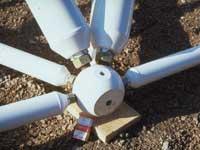
Although the structures that can be designed are very different, in the design of the parts there is no basic modification, being able to vary the size of the ball, the bar and the screws depending on the load to bear.
Some of the spatial structures are collected through specialized producers such as rods, tapered bushings, screws and balls. The rest is done in the company Lan: machining conical bushings, assembly of bar edges, cutting of bars, welding of conical bars and bushings, painted of bars by polymerization in oven, threaded balls, preparation and painting of ball surfaces and classification of the parts for shipment to work. As mentioned above, the basis of the mentioned production system is fully computerized, since all orders are sent by computer to the machines involved in the production process. For all these works Lanik has a workshop of spatial structures in Asteasu. The CAM development system allows design and production processes to perform an Asteasu. Ball machining, bar cutting and welding are performed using high precision numerical control machines that collect the requirements of the aforementioned computer system.
Finally, the assembly phase, which Lanik also assumes, and which, as in the other phases, is based on commands extracted from the computer. The manufacturing process is fully computerized, fully automated. Given this characteristic, the diversity of spatial structures can be enormous, since very similar elements can form very different structures. This structure could hardly be carried out just a decade ago, since there was no computer bridge that could link the design process with the manufacturing process. First the design was realized, those who had to develop the manufacturing process had to take the drawings and give the parameters to the machine. At present all this is automated and the operator only has to place and remove the part. The rest is done by the machine itself, since orders arrive by computer from the design phase.
San Sebastián Bullring
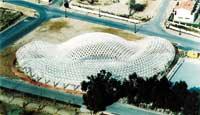
The bullring of Illumbe of San Sebastian has taken another step in the journey of spatial structures. In recent years much progress has been made in spatial structures: increasingly complex structures, increasingly large, increasingly competitive, in a world that seeks originality... and in the Plaza de Toros de San Sebastián mobile spatial structures have been achieved, incorporating movement to spatial structures that can have special characteristics.
Juan Martínez's participation in the Illumbe project has given the bullring an innovative character. In fact, in this project the area of research and development has joined the mechanics, that is, the two areas that Juan Martínez has worked in his work experience. This is a relatively rare mix in the industry: on the one hand structures, fixed elements, on the other hand mechanisms, moving elements.
The need to face the bullring of Lanik, as in other cases, began long before the project. In 1995 the promoters and architects of the bullring went to Lanik in search of an idea of the roof that would cover the bullring and that would be closed and opened. The roof should necessarily be closing and opening so that, in addition to being used in bullfights, the square would serve other shows. Of course, the incidence of economic profitability, which here rains a lot. The idea of departure was only that, without further limitations, of closing the roofs and opening them.
The solution came through a system called "betazal½". For some time now, this system was turning in the head of Juan Martínez. The origin of the term "eyelid" is clear, since the cover system in which the bullring of Illumbe has been placed is very similar to the movement of the eyelids to cover the eyes. Although in this case the palpebral system has been imposed on the bullring, in general it can be useful in any structure of circular base, although it can also be placed in other type of structures. The system is based on two main ideas:
- The opening should be centered, as the show takes place in the center of the building.
- The moving elements that must close or open the opening must be hidden moved on the fixed part of the structure, without protruding all of it from the perimeter of the building.
On the other hand, in order to make the work cheaper, it was expected to introduce the smallest possible number of moving elements. The solution came by the execution of the closure in two sections, placing two elements or doors in the form of half ellipse. Each of them rests on four points to advance and back on the rails. The two rear rails only support the vertical load, while the front rails, in addition to supporting the load, are responsible for the traction.
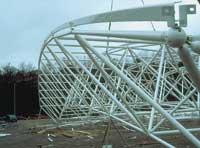
The system used to obtain the movement would be similar to the train that goes up on Mount Larrun, a pinion rack system, in which eight gearboxes are installed that simultaneously affect eight pinions and an electronic installation that receives orders by radio signals and sending computers. Since each of these pieces has to go up and down the structure of the bullring of Illumbe has a weight of 60 tons, the mechanisms are expensive, since it takes a great power to move this type of mass. However, the inclination of the structure also presents a significant advantage, since the fixed structure to which such load is subjected is dome-type, so the movement tends to follow the shape of the structure. Thanks to this, the structures themselves are more agile and the alleged lack of bending is made cheap by the lightness of the movement.
The system of the future?
The bullring of Illumbe is completely new. Therefore, before you could design any project for its implementation. What has been chosen, of course, has been totally new, since it has united movement to the imposing spatial structure. However, there is concern. Can it be done in old buildings? Engineer Juan Martínez believes that there would be no problem for this system to be implanted also in old buildings, especially – in his own words – for two reasons. "The weight of this structure, depending on the space being covered, is very small, since the spatial structures are by nature light. If we have used conventional materials, it would have much more weight. On the other hand, the load distribution is fairly homogeneous throughout the space. That is, the weight is well divided, especially because it has been given dome shape. Taking into account the characteristics of our structures, it is clear that it is also possible to place them on old buildings, which must be previously reinforced, but without great works."
In addition to Donostia-San Sebastián, in the bullring of Leganés has been installed a roof of spatial structures – another company, not Lanik – that can cover half of the spectators when it rains. In case of proliferation of custom, companies that work with spatial structures can have a work of several years, since they not only see bullsquares, but also increasingly in other types of buildings.
Some curious facts
|
Juan Martínez Apeztegia, construction engineer
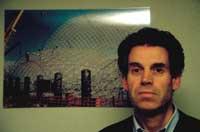
Although the most important part of his life takes place in San Sebastian, Juan Martínez Apeztegia is from Navarre, born in Elizondo. He also studied Expertise and Industrial Engineering in San Sebastian. Doctorate in mechanical engineering from the University of Navarra in 1972.
Immediately after finishing engineering he began working in companies while he began collaborating with the CEIT technology center in machine tool research. He later joined the structures area at the company "Rodríguez y Bergara", also working on research and development issues. After four years in this company, he had the opportunity to know the field of structures, but at the same time maintained his relationship with the world of mechanics and machine. She has spent her last 20 years in the field of spatial structures, an innovative field at that time when she began.

Gai honi buruzko eduki gehiago
Elhuyarrek garatutako teknologia



